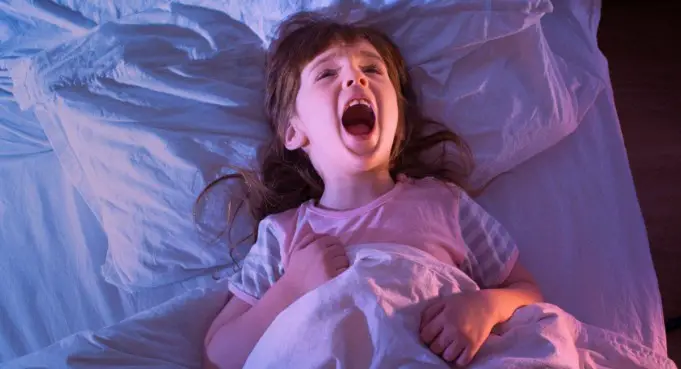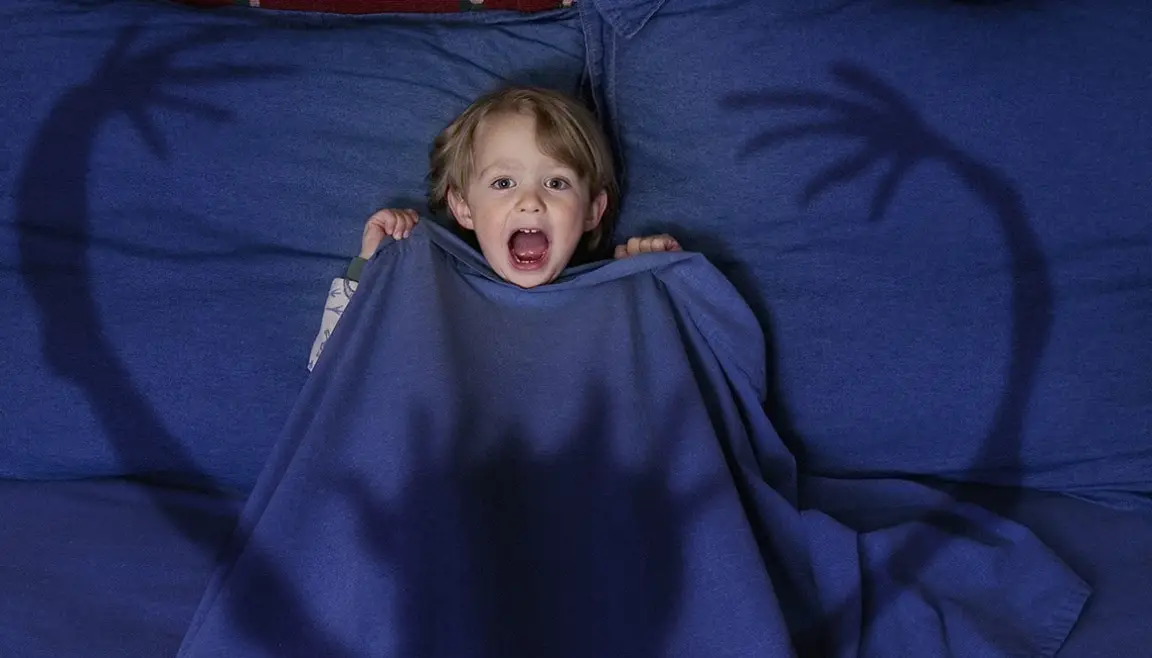Have you ever experienced nights where you are extremely afraid, you break out in sweats, and you are screaming? If you have ever experienced this, then you properly have what is known as Night Terrors.
Night Terrors also called Sleep terrors, are said to occur when a person starts to experience intense fear, screaming episodes as well as episodes of the patient flailing while sleeping. Sometimes, sleepwalking is often associated with night terrors.
Just like sleepwalking, sleep terrors are mostly episodes of undesired occurrences that happens while the patient is sleeping, a condition referred to as parasomnia. One sleep terror episode can sometimes stretch from a few seconds to a few minutes. However, some episodes can stretch longer.
Sleep terror is a common occurrence among kids, with a 40% increased chance in children lesser than 7. Most children often outgrow sleep terrors once they become teenagers. In adults, however, the case is slightly different. This is because the chances of developing sleep terrors decrease with age.
Generally, there are two types of sleep discovered by doctors. They are the Rapid Eye Movement(REM) sleep as well as the Non-Rapid Eye Movement(also known as the Non-Rem) sleep.
According to research, about 60-90minutes after the patient falls asleep, and the person will begin to experience sleep terrors. Also, every 1 in 60 children often deals with sleep terrors.
This condition happens to both male and female children, as well as to children of all races.
Differences between Nightmares and Night Terrors
Sleep terrors and nightmares are often mistaken for each other. However, there are specific differences that can help you distinguish them from each other and also help you know which one you or a close family member is suffering from and also know how to help.
1. Sleep terrors are mostly seen to occur during Non-Rem(Non-Rapid Eye movement) sleep. Non-Rapid Eye Movement sleep is the kind of sleep that occurs when the person is not dreaming. However, nightmares, on the other hand, are different.
Nightmares often occur when the person is deeply asleep (Rapid Eye movement sleep) and is prone to having dreams. Because of the fact the person who experiences nightmares have them when they are dreaming, it means that the patient will most likely experience nightmares late at night or very early in the morning.
2. Another difference that clearly distinguishes nightmares from sleep terrors is the fact the person who has nightmares can still remember what the nightmare is about. The person who has had a nightmare can wake up with a vivid remembrance a However, a person who has sleep terrors wouldn’t remember what happened.
Often, they may wake up shouting, sleepwalk, or sometimes appear scared before they eventually go back to sleep. However, when they walk up, they often don’t remember either waking up at night or what caused them to scream.
3. Night terrors are often commonly seen in children. Most people who have been seen to have presented with cases of night terror are mostly between the ages of two and seven years old, respectively.
However, as the child grows into an adult, night terrors mostly resolve itself. This doesn’t mean that night terrors don’t affect adults as well.
Causes
Night terrors are usually classified as parasomnia (which is an undesirable experience or behavior while sleeping). Most times, night disorders are a result of a disorder of sleep arousal.
This means that they occur when the patient is in the deepest stage of Non-Rapid Eye Movement. This stage is called the N3 sleep.
Another disorder that is commonly associated with night terrors is sleepwalking, which is also as a result of sleep arousal. There are other factors that can contribute to these sleep disorders, and they include:
- Extreme tiredness and severe sleep deprivation.
- Severe stress
- Intense fever
- Disruptions in one’s sleep schedule
- Interruptions in sleeping patterns
There are certain underlying conditions that contribute to causing night terror. They include:
- Sleep apnea: Sleep apnea refers to disorders in the breathing of a person while asleep. Sleep apnea is characterized by a group of disorders that causes abnormal breathing rhythms while sleeping. The most common type of sleep apnea is obstructive sleep apnea.
- Restless legs syndrome: This is often characterized by the inability to sit still or be in one place.
- Some medications that can cause disruptions in the Central Nervous system also result in night terrors.
- Severe fever
- The intake of too much caffeine can result in Night terrors
- Excessive alcohol intake in adults
- Depression
- Anxiety.
Symptoms
Most times, people who experience night terrors are asleep throughout the entire episode and, more often than not, can’t remember the details.
Children often don’t remember having any disturbances in the night while; in some cases, some adults tend to wake up with a memory of what may have happened.
Night terrors often happen within the first half or the first third of the night. However, the person may not experience night terrors when having naps during the day. More often than not, night terrors often cause the person to sleepwalk.
When a person has night terrors, he or she will likely experience the following;
- Screaming or shouting, which are often frightening.
- Routine disturbance of the patient’s sleep as well as the sleep of the family members.
- Wide-eyed stares.
- Intense sweating
- Heavy breathing as well as a racing pulse.
- Flushed faces as well as dilated pupils.
- The ability to thrash and kick things even while asleep.
- They are often hard to awaken, and when you can eventually wake them, they often seem very confused.
- Persons who suffer from night terrors are often inconsolable.
- They often have little or no recall of the last night’s events.
- Most times, they get out of bed and run around the house. Sometimes, they have the tendency to become aggressive when they are restrained or blocked.
- Sometimes, they tend to flail in bed.
Most times, these episodes can last for a few minutes; however, some patients have been seen to have episodes that may last for up to 30minutes.
Risk factors
1. Genetics
The most important risk factor attached to night terrors is genetics. If a family member has had night terrors, then there is a tendency that it may occur in any of the family members, especially the kids.
2. Sex
Research has shown that female children often experience night terrors much more than the male children.
Complications
If night terrors aren’t correctly managed, they can result in certain complications such as
- Sleepiness during the day: The child will almost always feel very exhausted during the day. This is because sometimes, they are often terrified to sleep at night, knowing that they may experience another episode. When the child or adult is always sleepy during the day, it can cause a lack of focus on work and activities of the day.
- Disturbed sleep
- It can result in troubled relationships.
- Injuries that are self-inflicted or sometimes, can cause harm to other people nearby.
When to seek for a doctor
Generally, night terrors don’t cause a problem; however, they disrupt the sleep of the child. Children often encounter night terrors, as well as other sleep disorders.
However, one may need to discuss with a doctor if it seems that the child is often disturbed while sleeping.
Diagnosis
A doctor can easily diagnose night terrors using their medical history as well as a physical examination.
If the doctor suspects any underlying conditions, he may decide to carry out other tests such as
1. An EEG
EEG, which means Electroencephalography is a test that is usually carried out in order to detect and monitor the electrical activity of the brain. These tests are generally carried out using small electrodes(small metal discs) that are attached to the scalp of the patient.
This test is carried out while the patient is asleep, and it is done to measure the brain activity of the patient as well as check for seizures.
2. Polysomnography
The test polysomnography is a test that is used to measure the breathing patterns as well as to detect any disorders that are present in the person’s respiratory system.
Treatment
Generally, there are no treatments available to treat Night terrors as they tend to resolve themselves as the child grows older. However, there are rare cases in which night terrors may affect your child’s activities during the day.
It may affect how the child fares in school or the child’s relationship with parents, families, and friends. Once these happen, the doctor will prescribe certain drugs such as clonazepam or tricyclic antidepressants.
There are certain home remedies that a parent can use to help his/her child to help ease the effects of night terrors or possibly prevent it. They include:
- Ensure that you make your child’s room safe by removing sharp objects and other things that may hurt them during an episode.
- Ensure that you remove anything that can cause them disturbances as they sleep or cause disruptions in their sleep patterns. Objects such as electronic screens or things can cause noise can be removed.
- You can ensure that you remove anything that can increase the stress levels of your child.
- You must ensure that your child or children get their much needed rest. Don’t let them stay up too late or become too tired before they sleep.
- Help your children create a regular sleeping pattern and help them stick to it.
- Ensure that your child has a defined wake up time and that they adhere to it.
References;
- Sleep terrors (Night terrors); Mayoclinic
- Night terrors; WebMD
- 8 ways to tell a night terror from a nightmare; Sleep Foundation













